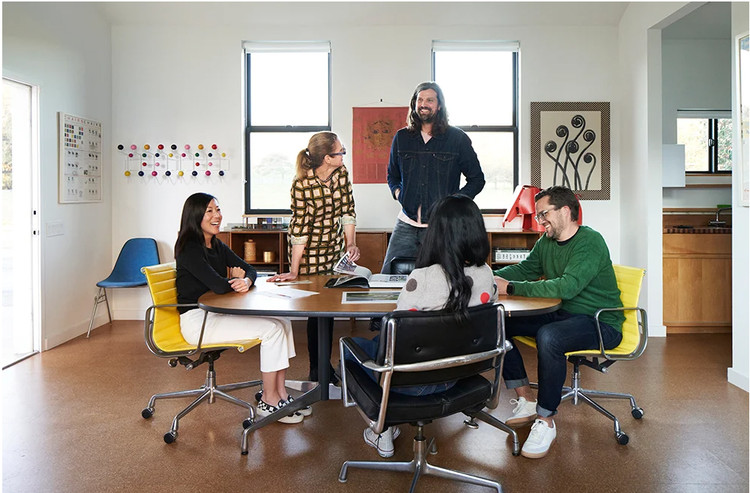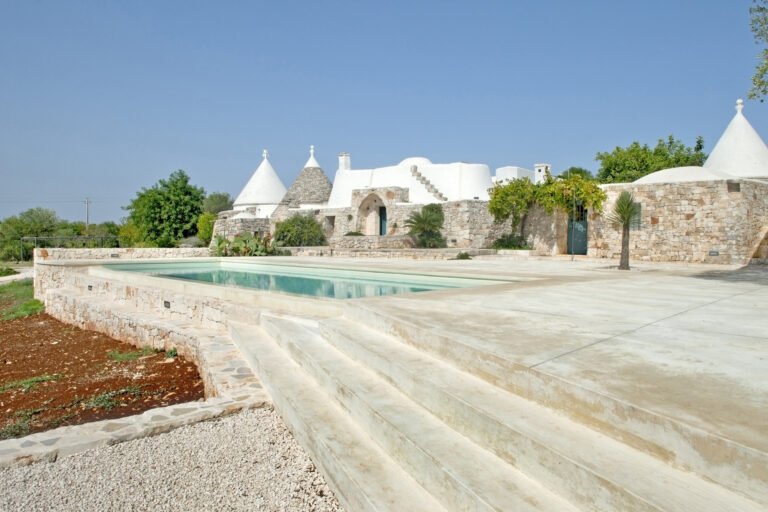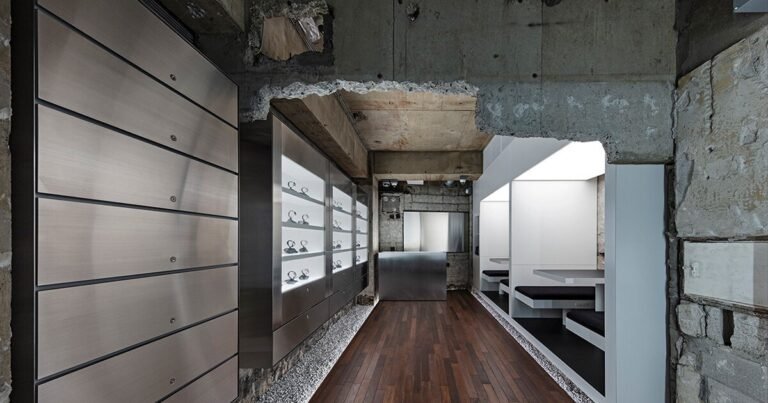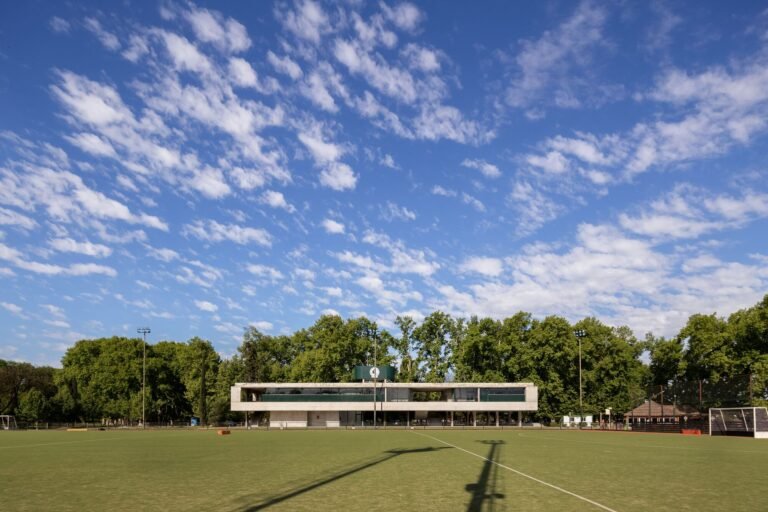Spirits in the Material World: A Trip to the Eames Institute

Metropolis Magazine’s Kenneth Caldwell visits the Eames Ranch in Petaluma, California to unpack the goals and secrets of the Eames Institute of Infinite Curiosity. He explains that he may not be the best person to write objectively about the recent public launch of the Eames Institute of Infinite Curiosity, a non-profit formed in 2019 to help us explore Charles and Ray Eames’ legacy; particularly their timeless, iterative design process; the chair he sits in every day was designed by the Eameses the year he was born, and their work has been part of his life since he was a young boy looking for the future in architecture magazines at the local public library.
I have acquired several Eames chairs, both full scale and miniature. I have a splint, a coat rack, toys, and volumes of books. The Eamses insisted that they did not have a style or even an “ism.” As Sewell Jones reminded me, Modernism was an idea, not a style.
In October 1989, I attended the opening of the Case Study House exhibition Blueprints for Modern Living at what was then known as the Temporary Contemporary (now the Geffen Contemporary at MOCA) in downtown Los Angeles. I walked through the show with my friend Elaine Sewell Jones, widow of Case Study House architect A. Quincy Jones, and her good friend Lucia Eames, daughter of Charles Eames. On one side was a partial reconstruction, a skeletal outline, of perhaps the most influential Case Study House #8, by Charles and Ray Eames.
Blueprints for Modern Living would be an important catalyst for a revival of interest in midcentury architecture and design. But along with the renewed desire to preserve Modernist structures around the globe, from single-family residences to hotels, airport terminals, and even parking garages, Modernism has largely been diluted from a series of ideas rooted in social change to one of just style—Instagram moments, if you will. The Eameses insisted that they did not have a style or even an “ism.” As Sewell Jones reminded me, Modernism was an idea, not a style.
With the establishment of the Eames Institute, I hope Charles and Ray will be remembered most of all for their ideas and processes. While an Eames lounge chair symbolizes a special kind of luxury, the method that led to the Eames’ furniture for schools, cafeterias, and airport seating came from the same way of working that they used to make their molded plywood splint during World War II.
Since Charles’ death in 1978 and Ray’s death exactly ten years later, the Eames family has been a careful steward of this legacy of craft and ideas. Sure, there have been some commercialization, like a miniature reproduction of Case Study House #8 in a three-dimensional wood puzzle (I have one), a LEGO model (not so good), and now a new Reebok tennis shoe.
The Eames Institute’s small inaugural exhibition during NYCxDESIGN at Herman Miller’s Park Avenue showroom focused on process as much as object. This is a good sign for Eames enthusiasts everywhere. The show’s three large windows highlighted the designers’ approach with plywood, graphics, and aluminum. It’s a relatively small display, but the message is constant: design is an ongoing, iterative process.

An Eames Pilgrimage
To borrow from the words of The Police: “We are spirits in the material world.” It is a good time to look back and reexamine the ideas that will help us move forward beyond the objects, beyond style or worse, fetishization, and use Charles and Ray’s thinking as inspiration for solving all kinds of economic, social, and ecological challenges. Now that the Eames Institute is up and running, I thought it would be a good time to pay a visit to the homes of all things Eamesian.
A few months before visiting the Eames Ranch, I toured Charles and Ray’s Eames House in Pacific Palisades. Nestled into a hillside overlooking a meadow and the distant Pacific Ocean, it’s not visible from the road, and a gate now discourages visitors without reservations. Most registered visitors are only allowed to peek inside the open front door and sliding patio doors. Everything is precious—you observe more than engage. It is now a museum house. The landscape is still impressive and the house feels intimate, scaled for a couple and their visiting grandchildren. But all of the Eames objects and experiments once housed in their office building (known by its address number as “901”) in nearby Venice are not to be found there.
A lot of the treasures from 901 are now at the Eames Ranch such as a family compound, studio, and archive opened by Lucia in 1996. It’s several hundred miles north of Los Angeles in Petaluma, an agricultural town an hour’s drive from San Francisco. Petaluma stretches over rolling farms west towards the sea. Dotting the landscape are a few modest houses, metal sheds, barns, cows, horses, and sheep. Somehow it has not been overrun by the Bay Area’s northward sprawl and it looks much as it did when we took Sunday drives in the 1960s.
Approaching the Ranch, you can see a collection of white barn-like structures in the open field. The gate is open, and a curving drive concludes with a number of parked vehicles. This certainly isn’t a formal house museum. It feels like a design ranch. But it’s not clear what is being grown. The full name is the Eames Institute of Infinite Curiosity, but there is no sign. What’s stored in these barn-like buildings are seeds, but not seeds that grow plants. After the visit, I figured it out: seeds for curiosity seekers.
Within a few minutes, I meet some of the staff, including Sam Grawe, the former editor of Dwell and most recently editor and brand director at Herman Miller. Llisa Demetrios, Lucia’s daughter and the Institute’s chief curator, takes me on a tour of the compound and archive. Lucia oversaw the donation of slides and printed matter to the Library of Congress, sold 901, and stored most of the other Eames archives in the Bay Area.
The compound, designed by renowned Bay Area architect William Turnbull, now holds 40,000 to 50,000 items. Unlike most houses, this one required the floors to accommodate a forklift. Finished in 1996, the detached barn served as a studio that Lucia and her family could use for making large sculptures. Metal gates crafted by Lucia open onto a large courtyard with a segmented lawn, the perfect protected outdoor space for her visiting grandchildren. Beyond the courtyard, the fields change color throughout the year, but this space stays green.
Unlike the Eames House, these rural rectangles with pitched roofs are not about revealing structure. Despite their solid white volumes, they are about disappearing into the landscape, which makes their contents even more magical. The arrangement of the spaces creates intimacy. Within the buildings, there are plentiful skylights and carefully selected views of the surrounding landscape.
The design cognoscenti associate the work of Charles and Ray with Los Angeles. They moved there in 1941 because they could work without their clients looking over their shoulders. Likewise, Lucia and her family could work on their art and their archive in the quiet fields of Petaluma. Instead of sliding steel glass doors to let in the ocean breeze, there are large wood barn doors to welcome the morning light.
It took several large trucks to move out of 901 the 750,000 images that the Eames generated along with a lot of two-dimensional materials that were donated to the Library of Congress. According to Demetrios, her mother went back into the office and it still felt full: “… it looked like very little had been removed,” she says. “What she found when she was looking around was all about process.” We still want to see all the prototypes, all the great things they collected, but now the Eames family are able to do what Charles and Ray always advocated: connect and understand that a key constraint in any problem-solving process is to understand the benefit to society as a whole. We are all hosts, and we are all guests, to borrow a few more words from the Eames lexicon.
As I look around I am struck by the paradox of order and informality. Demetrios casually hands me a paper mache maquette for one of the chairs that is as light as a pastry; encourages me to pick up a piece of chalk from one of the small, thin drawers; gives me a marble to play the 15-foot-tall Musical Tower; invites me to look through a small piece of hexagonal metal tubing that doubles as a kaleidoscope; and gets me to play with another piece of metal that you dip into liquid soap to see a form that explains surface tension. And on a table of paper treats, we look at a colorful drawing of outfits that is actually Ray’s packing list for a trip to England.

Moving Beyond the Objects
Looking beyond the beauty of the Eames’s accomplishments and archive toward the process of creating is not a new idea. Llisa Demetrios’s brother, Eames Demetrios, wrote a fine book, An Eames Primer, and Institute consultant Daniel Ostroff edited An Eames Anthology: Articles, Film Scripts, Interviews, Letters, Notes, and Speeches. These are both essential texts for understanding the thinking of the two great designers. But now we have the largest archive of Eames material being actively preserved and shared to help us figure it out. Sharing that body of material in a proactive way is one of the key activities of the Institute. As guests, we have to make the connections.
Like most things, the recent changes at the archive are economic. Llisa explained to me that after Lucia passed away in 2014, it seemed that the farm would have to be sold. Some donors suggested that she continue her years-long task of archiving the collection. They understood the enormous value in sharing the process, the ideas, behind these great works. But by then the buildings had deferred maintenance, and only a portion of the enormous archive had been processed.
In 2019, the Eames Institute became a 501c3, and the archive was transferred from the family to the Institute. While there can be occasional visitors to the archive, the enterprise was not set up to be a public facility. John Cary, Jr.,former executive director of the nonprofit organization Public Architecture (and consultant to a number of organizations, including the Aspen institute, TED, and the Obama Institute) joined the organization as it was forming in 2018. He carefully studied Charles’s Design Diagram and figured how he could help advance the ideas sketched out in 1969.
With the tour of the compound completed, Cary, Demetrios, and I sat in a grouping of Eames loungers to chat about the few questions that remained unanswered. First, the compound itself needed to be renovated to protect the collection. The materials had to be gathered from various locations. A staff had to be assembled to handle the growing tasks of archiving, storytelling, programming, and exhibition design and preparation.
The first offering from the Institute is the website, which like any Eames process, will experiment, iterate, and be improved. Demetrios says the team felt that a digital presence could reach a broad audience. When Lucia was alive, Demetrios and her mother would share the objects and stories in person. But now, thanks to donors, including the very generous founder of AirBnB, Joe Gebbia (who attributes some of his success to the Eames thinking), it’s possible to take all of this online and beyond. The website is like an Eames chair: the result looks simple, and the complexity takes a long time to understand.

A lot of credit goes to Grawe. Within the website he has created a magazine, Kazam!, named after the famous Kazam machine in the guest room of the Eameses’ Neutra apartment, where they first molded plywood. Design writer Alexandra Lange has contributed one of the first articles, describing the history and workings of the famous machine. Demetrios now leads the collections team, consisting of half a dozen experienced museum professionals and archivists as well as contract conservators and researchers. Since the Eames Collection was acquired from the Eames family, the team has inventoried nearly 15,000 additional pieces.
Cary’s influence can be seen in a series of stories on the site about design for social good. These include profiles of local makers and interviews based on the format of the famous Q + A with Charles from the 1969 Louvre Museum exhibit, “What Is Design?” Among the recent interviewees are Emily Pilloton-Lam, founder of Berkeley-based nonprofit organization Girls Garage and Caitlin Taylor, creator of MASS Design Group’s Food Systems Design Lab.
In another web story, Llisa describes viewing the Eames’ famous film Powers of Ten in her 10th grade science class; she got to witness its creation at 901 Washington. “Seeing the finished project was a revelation, not just because the film gave me a whole new perspective on scale, but because I also gained an insight into the creative process,” she writes. As Powers of Ten illustrates, the Eames were brilliant at connecting the individual to the global. Less is known about The India Report (1958), in which they write about the lota, a traditional vessel, which captures the beautiful and useful traditions of the country as a basis for India’s challenge of maintaining design quality in a rapidly changing world. In much the same way as they did in Powers of Ten, they have channeled so much by focusing on a small detail. What if, in the future, this project could be reexamined within the context of India’s growth and evolution and how much more we know about colonialism’s influence? It’s that kind of exploration that the Eames Institute can help initiate and collaborate on.
When the Eames were practicing, they were also concerned about the materials they used and their ecological impact. “When I was growing up, Ray discontinued the Brazilian Rosewood on the Eames Lounge and ottoman because the harvesting of it was bad for the forest,” Demetrios says. “Ray also discontinued fiberglass. So what I’m hoping is that we’re actually raising the bar on the quality of life, but having less of an impact on the environment. It’s about being global stewards.”
Like so many Eames projects, it begins with what is in front of you. Most of the land at the Ranch is dedicated to grazing sheep, whose role in restoring native grasslands is part of a goal to become a fully net-zero carbon and net water neutral property that is closed-loop and resilient. It’s becoming a laboratory for sustainable design solutions like local Carbon Farming practices, riparian habitat restoration, advanced septic systems, algae harvesting, and rotational animal grazing, already underway. “We will prototype, iterate, and share solutions to these problems,” adds Cary. Not only are they testing agricultural innovations, but they are testing an Eamesian kind of process.
After some more discussion about expansive thinking and future projects, we end up returning to the material world. The Institute wants to add descriptive information for all the illustrated objects, but Cary and Demetrios don’t feel it would be good to just dump everything on the site. Like all things around here, it will be curated, even if the result looks informal. “The goal of the collection section of the website is to include a record of each object, so that the vast spectrum of archival material in the collection can and will inform not just what Ray and Charles designed but also how they designed,” Demetrios says.
The question of a museum comes up. Both Cary and Demetrios talk about the opportunity. While it clearly interests them, it seems like they don’t want to get ahead of themselves. Maybe spread the word about the process more? Given how prescient the Eameses were about computers, communication, and interaction as ways to share information, I can only imagine that this museum, when it is developed, will be a very different kind of museum. Launching virtually first gives the Institute a good foundation for a structure in the material world.
Over the next few weeks, my visit to the Eames Ranch becomes like a dream and begins to blur, and I can’t quite place in what space I experienced which treasure. Demetrios reminds me that there are treasures that no one outside the family and the Institute has ever seen. For me to get a personal tour was like being a kid in the proverbial candy store. I remember the brief time I spent with Lucia Eames next to the ghost of the Eames House in the 1989 Case Study show. That structure’s dark lines felt like a haunting inspiration. At the time I wondered why this house was only partially reconstructed. It was like a ghost. Now I wonder if the museum curators knew that if they had actually rebuilt the Eames house and filled it with all their delights, the Eameses would have stolen the show. With the advent of technology and its riches, there will be new constraints to replace some of the old ones. New challenges. New solutions. New questions. New iterations. More searching for the Spirits in the Material World.
This article was originally published on Metropolis Magazine.








